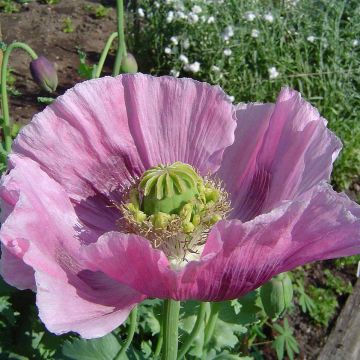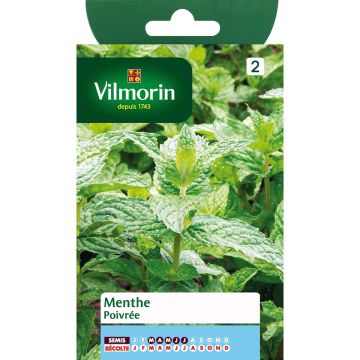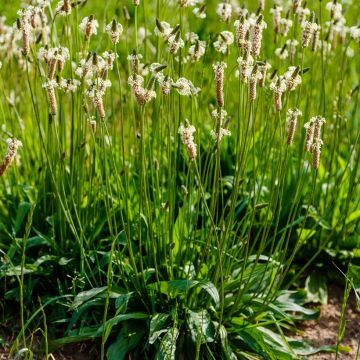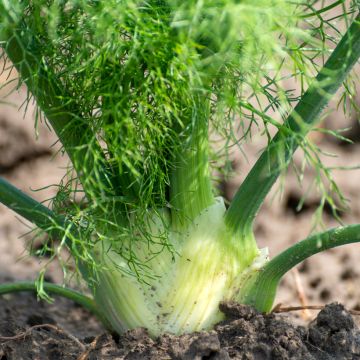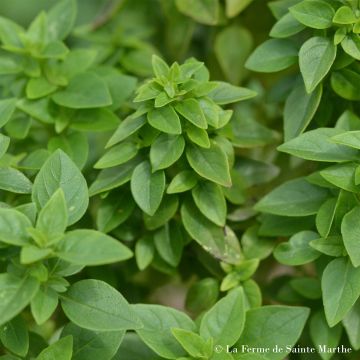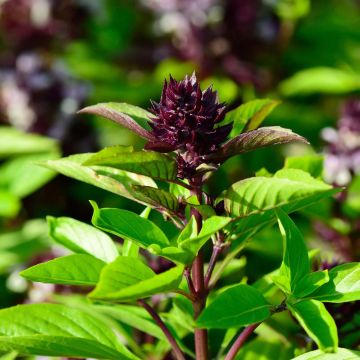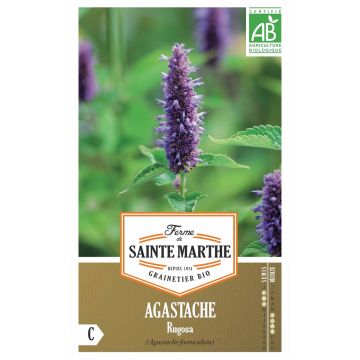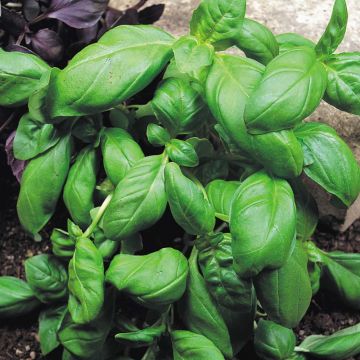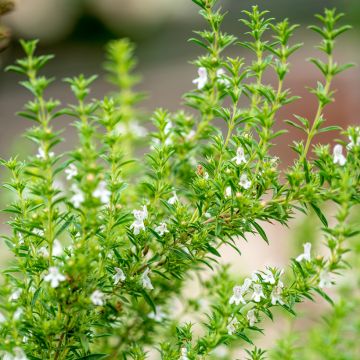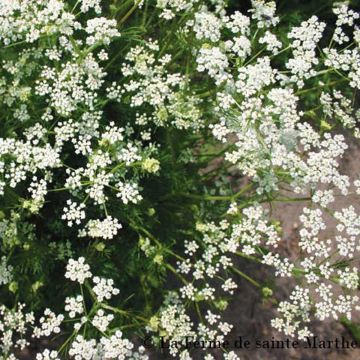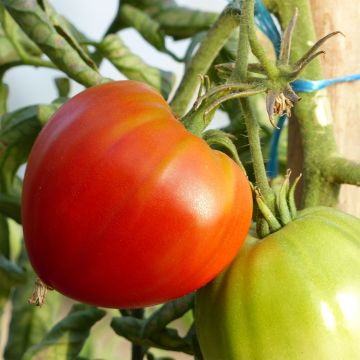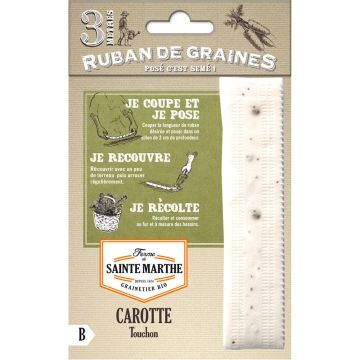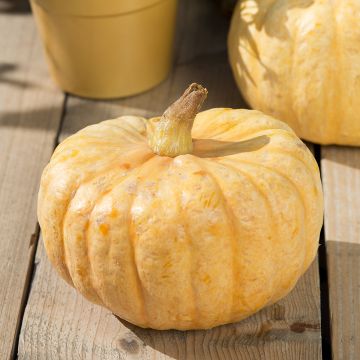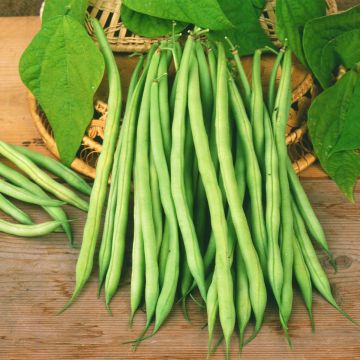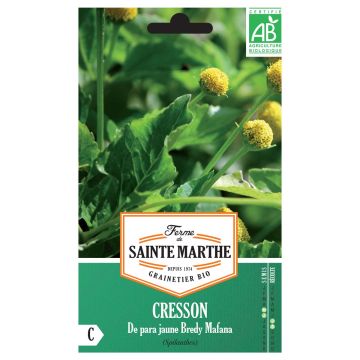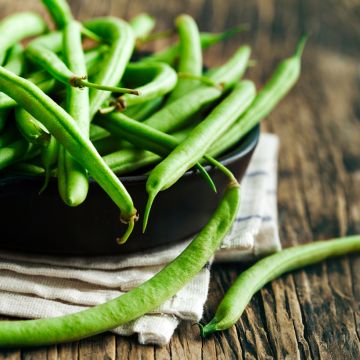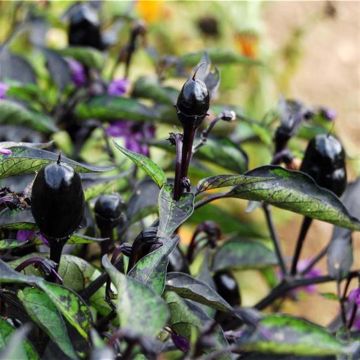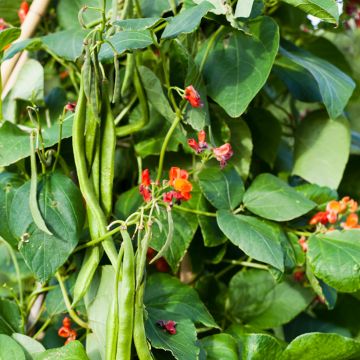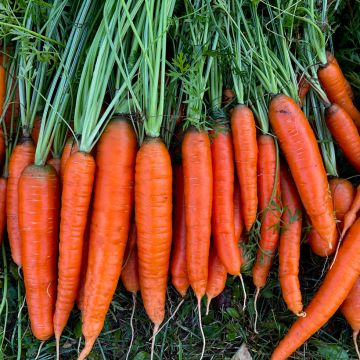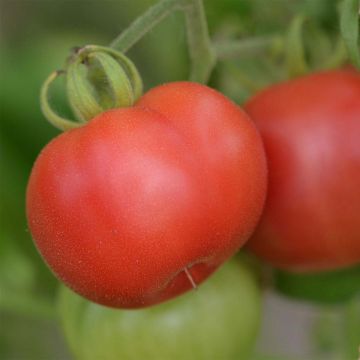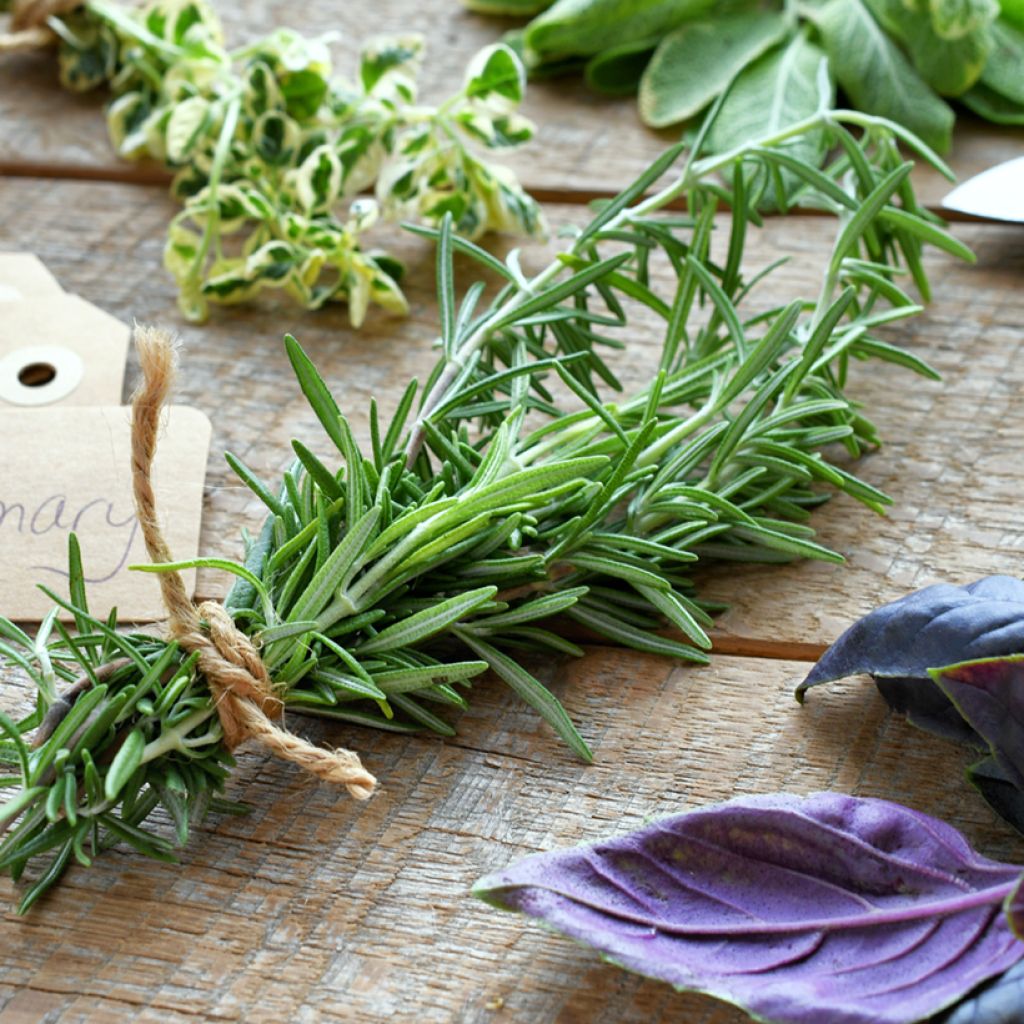

Rosmarinus officinalis organic seeds - Rosemary
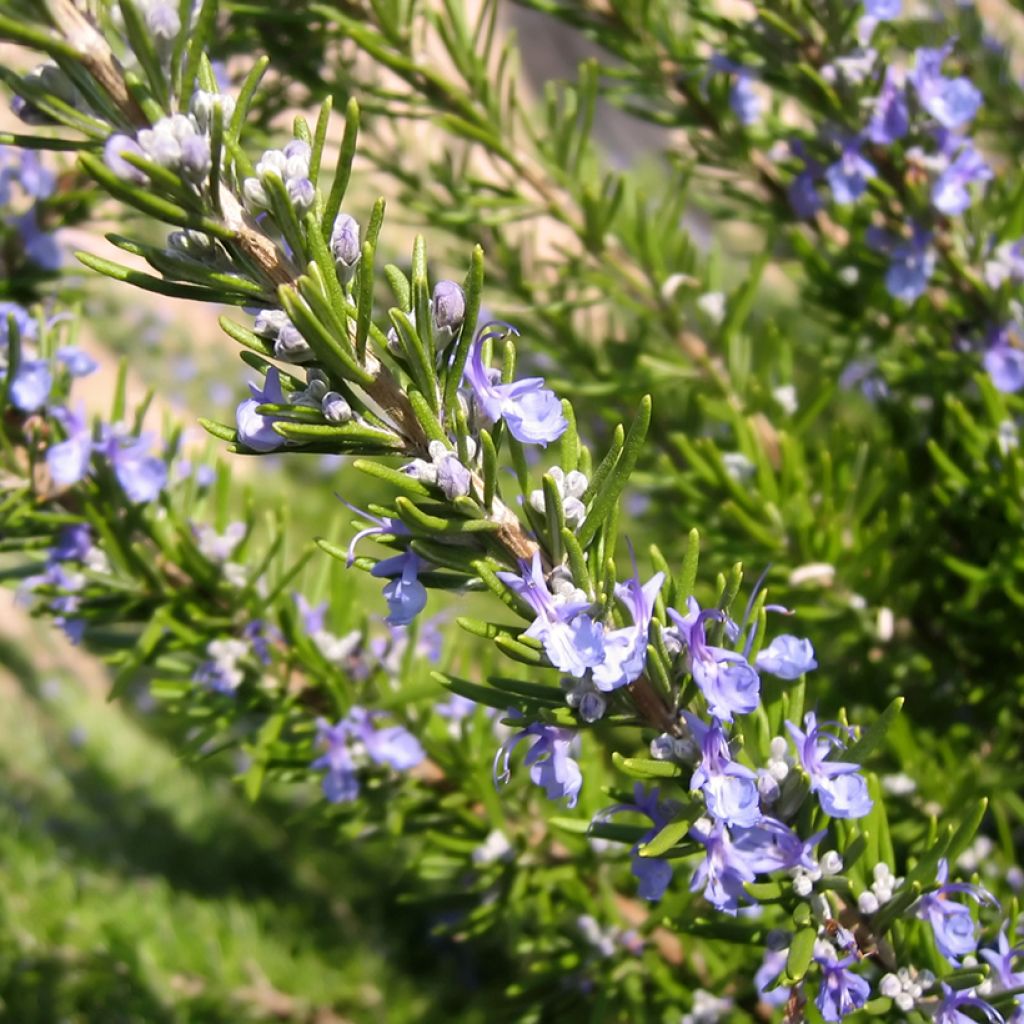

Rosmarinus officinalis organic seeds - Rosemary
Rosmarinus officinalis organic seeds - Rosemary
Rosmarinus officinalis
Rosemary
This item cannot be shipped to the selected country
Delivery charge from €5.90
Delivery to Corse prohibited
More information
Schedule delivery date,
and select date in basket
This plant carries a 6 months recovery warranty
More information
We guarantee the quality of our plants for a full growing cycle, and will replace at our expense any plant that fails to recover under normal climatic and planting conditions.
From €5.90 for pickup delivery and €6.90 for home delivery
Express home delivery from €8.90.
Delivery to Corse prohibited: UE law prohibits the import of this plant from mainland France to Corse as part of the fight against Xylella fastidiosa. Please accept our sincere apologies.
More information
Description
Rosemary (Rosmarinus officinalis, renamed Salvia rosmarinus) is an essential Mediterranean shrub in ornamental gardens and in the kitchen. Able to reach 1.5 m in height, with rapid growth, it bears narrow, evergreen leaves in winter, intensely aromatic.
Cultivated for a long time for its numerous virtues, rosemary is appreciated both as a condiment and as a medicinal plant. Its fresh or dried leaves enhance grills, soups, meats, fish, poultry, game, vegetables, and even pasta. It is also used in infusion for its digestive, tonic, antiseptic, and bactericidal properties, thanks to its richness in essential oils.
Sow between April and June, in full sun, in a light and well-drained soil. A first harvest of leaves can be considered one year after sowing. Rosemary particularly enjoys arid, rocky, or poor soils, and requires little maintenance. Regular pruning helps to keep it compact and neat. It adapts well to container growing, allowing it to be conveniently placed on the balcony or terrace, in association with other herbs like thyme or summer savory.
Leaf harvesting extends from April to October by delicately cutting the branches, which can then be dried in the shade and stored in a dry place to extend their use. In addition to its culinary and medicinal benefits, rosemary is an excellent ally in the garden: it naturally repels pests, such as carrot fly, while attracting pollinators.
Rosemary, native to the Mediterranean basin, is an emblematic plant of warm and dry regions where it commonly grows on rocky hillsides and by the sea. Its Latin name, meaning "dew of the sea," evokes its habitat near sunny coasts. Belonging to the Lamiaceae family, like thyme, mint or lavender, rosemary has been used since Antiquity for its medicinal and aromatic properties. Highly appreciated by the Greeks and Romans, it was also considered a sacred plant and used in rituals or to perfume homes. With its multiple benefits, incense-like fragrance, and great simplicity, rosemary is essential for those who appreciate flavour and simplicity.
Report an error about the product description
Rosmarinus officinalis organic seeds - Rosemary in pictures


Harvest
Plant habit
Foliage
Botanical data
Rosmarinus
officinalis
Lamiaceae
Rosemary
Salvia rosmarinus
Mediterranean
Perennial
Other Herb seeds
Planting and care
Sowing of Rosmarinus officinalis:
Sow seeds from April to June in preferably poor, well-drained soil, in full sun. Transplant the young plants to a nursery, spacing them 10 cm apart in all directions. Plant them in their final position the following spring, 1 m apart.
Maintenance
Maintaining this plant involves occasional weeding and hoeing. Water only in case of severe drought, especially for young plants that are not yet well rooted. Later on, the bush can do without watering completely in summer. In case of severe cold, protect the plant with a winter fleece. A layer of straw can protect the roots from cold and moisture, but frozen rosemary never regrows from the stump. Its hardiness is around -12 °C at the coldest in a dry soil.
The main diseases of rosemary are seen at the neck and root system, caused by fungi that thrive in warm, moist soil (especially phytophthora).
Seedlings
Care
Intended location
This item has not been reviewed yet - be the first to leave a review about it.
Vegetable seeds
Haven't found what you were looking for?
Hardiness is the lowest winter temperature a plant can endure without suffering serious damage or even dying. However, hardiness is affected by location (a sheltered area, such as a patio), protection (winter cover) and soil type (hardiness is improved by well-drained soil).

Photo Sharing Terms & Conditions
In order to encourage gardeners to interact and share their experiences, Promesse de fleurs offers various media enabling content to be uploaded onto its Site - in particular via the ‘Photo sharing’ module.
The User agrees to refrain from:
- Posting any content that is illegal, prejudicial, insulting, racist, inciteful to hatred, revisionist, contrary to public decency, that infringes on privacy or on the privacy rights of third parties, in particular the publicity rights of persons and goods, intellectual property rights, or the right to privacy.
- Submitting content on behalf of a third party;
- Impersonate the identity of a third party and/or publish any personal information about a third party;
In general, the User undertakes to refrain from any unethical behaviour.
All Content (in particular text, comments, files, images, photos, videos, creative works, etc.), which may be subject to property or intellectual property rights, image or other private rights, shall remain the property of the User, subject to the limited rights granted by the terms of the licence granted by Promesse de fleurs as stated below. Users are at liberty to publish or not to publish such Content on the Site, notably via the ‘Photo Sharing’ facility, and accept that this Content shall be made public and freely accessible, notably on the Internet.
Users further acknowledge, undertake to have ,and guarantee that they hold all necessary rights and permissions to publish such material on the Site, in particular with regard to the legislation in force pertaining to any privacy, property, intellectual property, image, or contractual rights, or rights of any other nature. By publishing such Content on the Site, Users acknowledge accepting full liability as publishers of the Content within the meaning of the law, and grant Promesse de fleurs, free of charge, an inclusive, worldwide licence for the said Content for the entire duration of its publication, including all reproduction, representation, up/downloading, displaying, performing, transmission, and storage rights.
Users also grant permission for their name to be linked to the Content and accept that this link may not always be made available.
By engaging in posting material, Users consent to their Content becoming automatically accessible on the Internet, in particular on other sites and/or blogs and/or web pages of the Promesse de fleurs site, including in particular social pages and the Promesse de fleurs catalogue.
Users may secure the removal of entrusted content free of charge by issuing a simple request via our contact form.
The flowering period indicated on our website applies to countries and regions located in USDA zone 8 (France, the United Kingdom, Ireland, the Netherlands, etc.)
It will vary according to where you live:
- In zones 9 to 10 (Italy, Spain, Greece, etc.), flowering will occur about 2 to 4 weeks earlier.
- In zones 6 to 7 (Germany, Poland, Slovenia, and lower mountainous regions), flowering will be delayed by 2 to 3 weeks.
- In zone 5 (Central Europe, Scandinavia), blooming will be delayed by 3 to 5 weeks.
In temperate climates, pruning of spring-flowering shrubs (forsythia, spireas, etc.) should be done just after flowering.
Pruning of summer-flowering shrubs (Indian Lilac, Perovskia, etc.) can be done in winter or spring.
In cold regions as well as with frost-sensitive plants, avoid pruning too early when severe frosts may still occur.
The planting period indicated on our website applies to countries and regions located in USDA zone 8 (France, United Kingdom, Ireland, Netherlands).
It will vary according to where you live:
- In Mediterranean zones (Marseille, Madrid, Milan, etc.), autumn and winter are the best planting periods.
- In continental zones (Strasbourg, Munich, Vienna, etc.), delay planting by 2 to 3 weeks in spring and bring it forward by 2 to 4 weeks in autumn.
- In mountainous regions (the Alps, Pyrenees, Carpathians, etc.), it is best to plant in late spring (May-June) or late summer (August-September).
The harvesting period indicated on our website applies to countries and regions in USDA zone 8 (France, England, Ireland, the Netherlands).
In colder areas (Scandinavia, Poland, Austria...) fruit and vegetable harvests are likely to be delayed by 3-4 weeks.
In warmer areas (Italy, Spain, Greece, etc.), harvesting will probably take place earlier, depending on weather conditions.
The sowing periods indicated on our website apply to countries and regions within USDA Zone 8 (France, UK, Ireland, Netherlands).
In colder areas (Scandinavia, Poland, Austria...), delay any outdoor sowing by 3-4 weeks, or sow under glass.
In warmer climes (Italy, Spain, Greece, etc.), bring outdoor sowing forward by a few weeks.

































